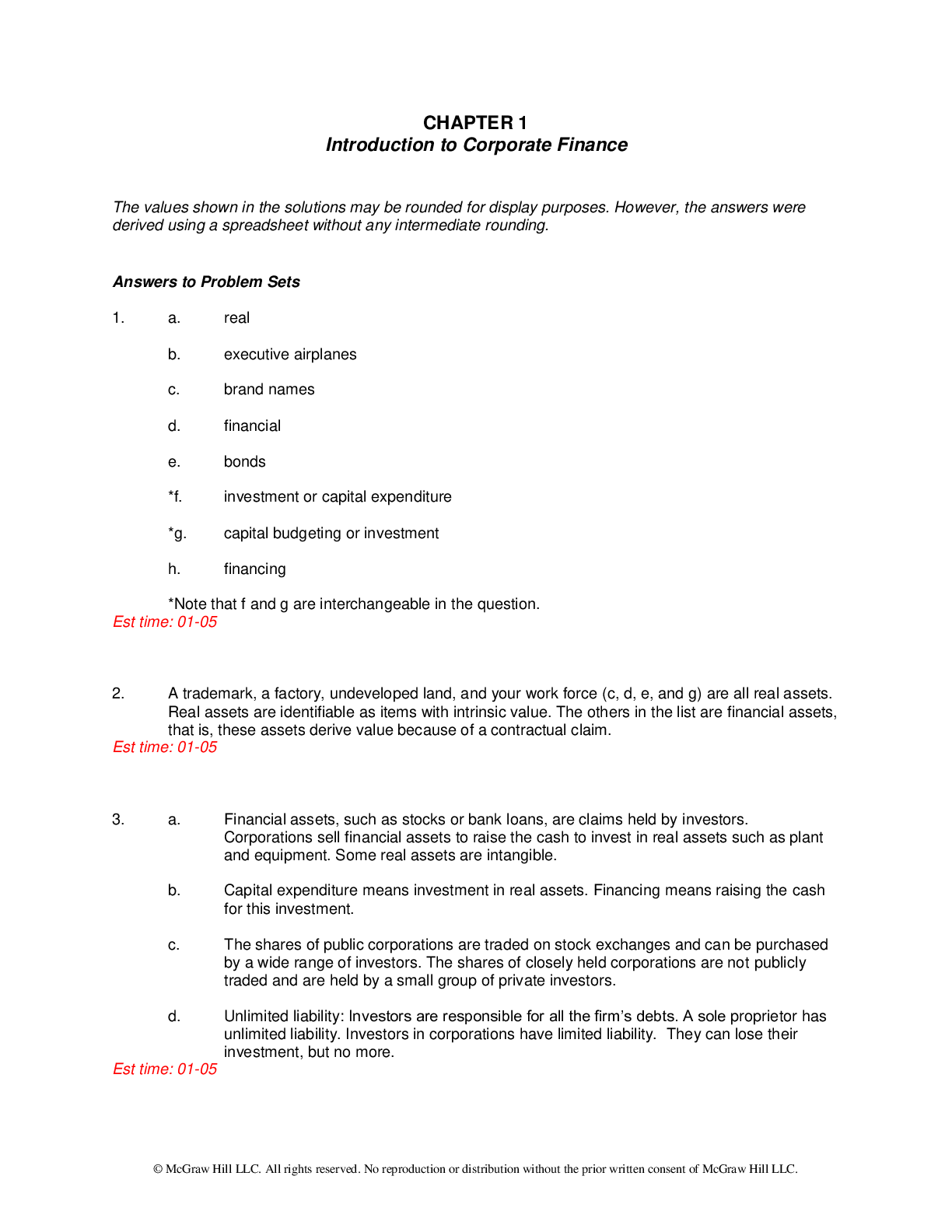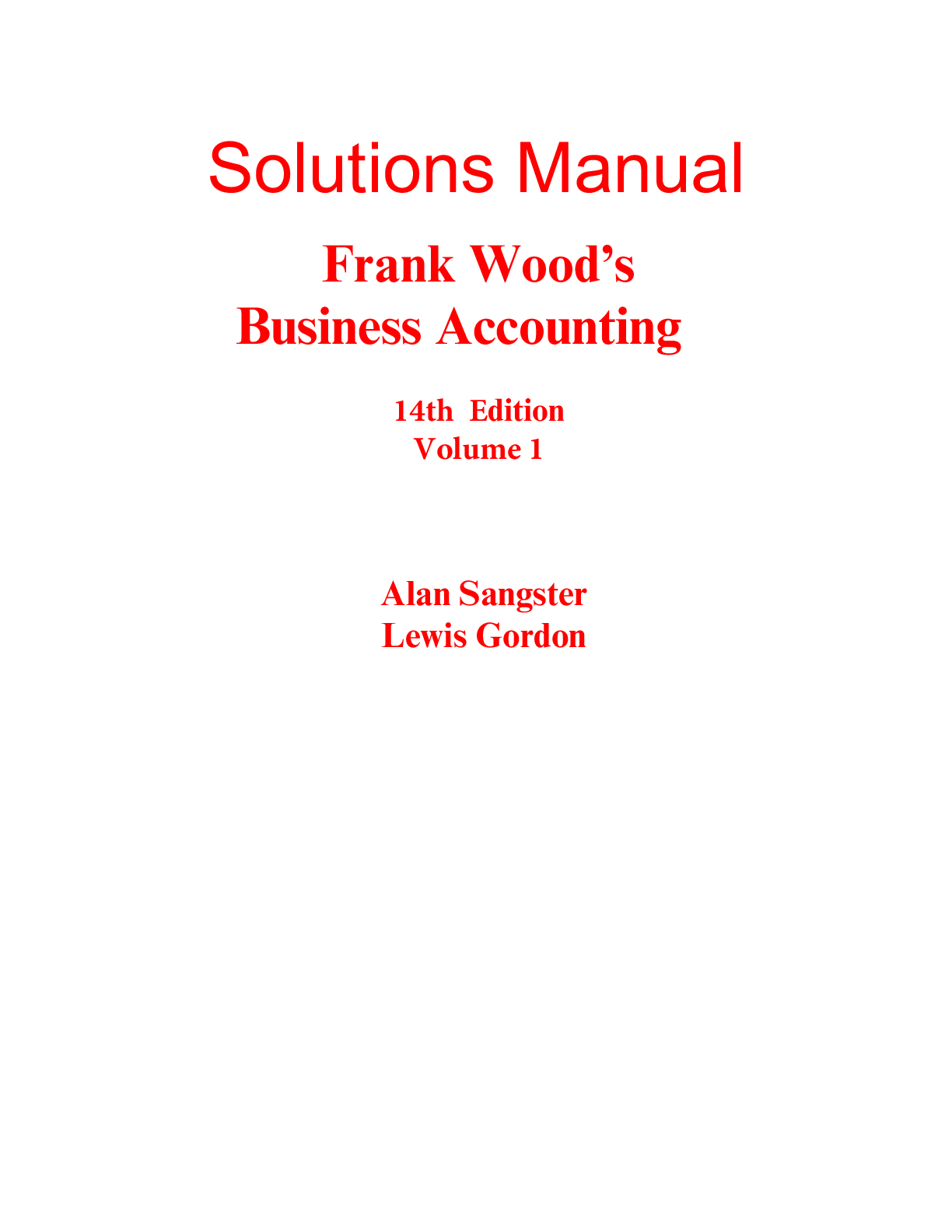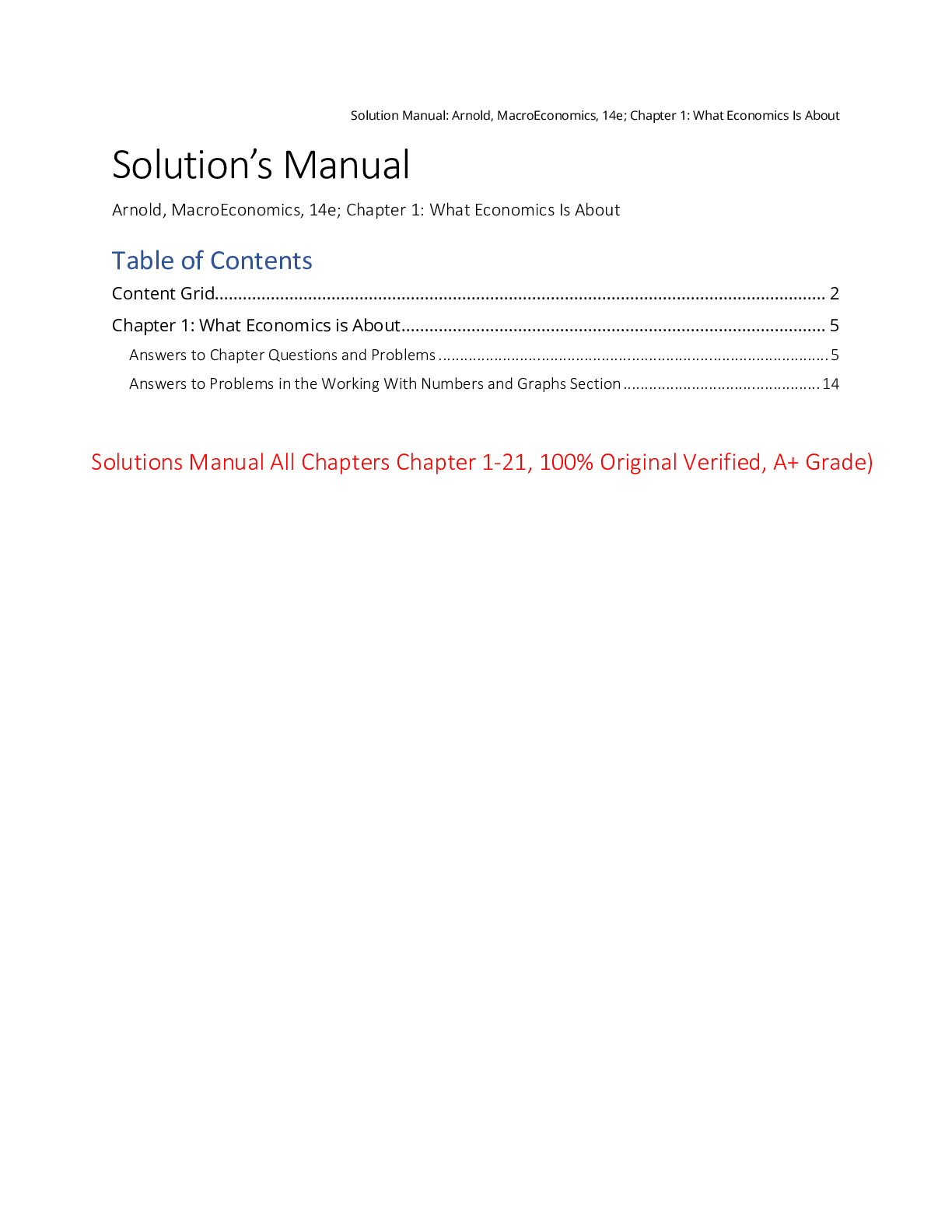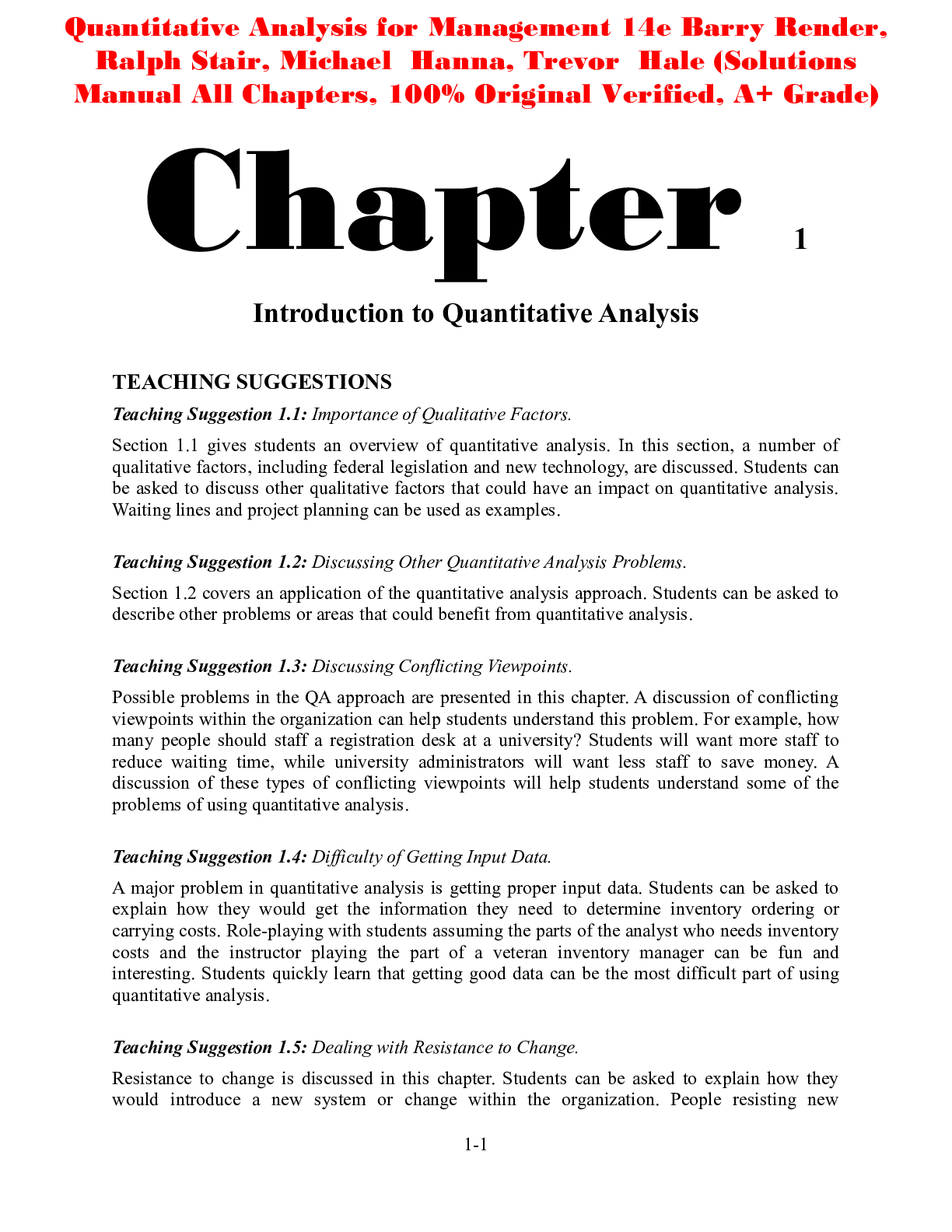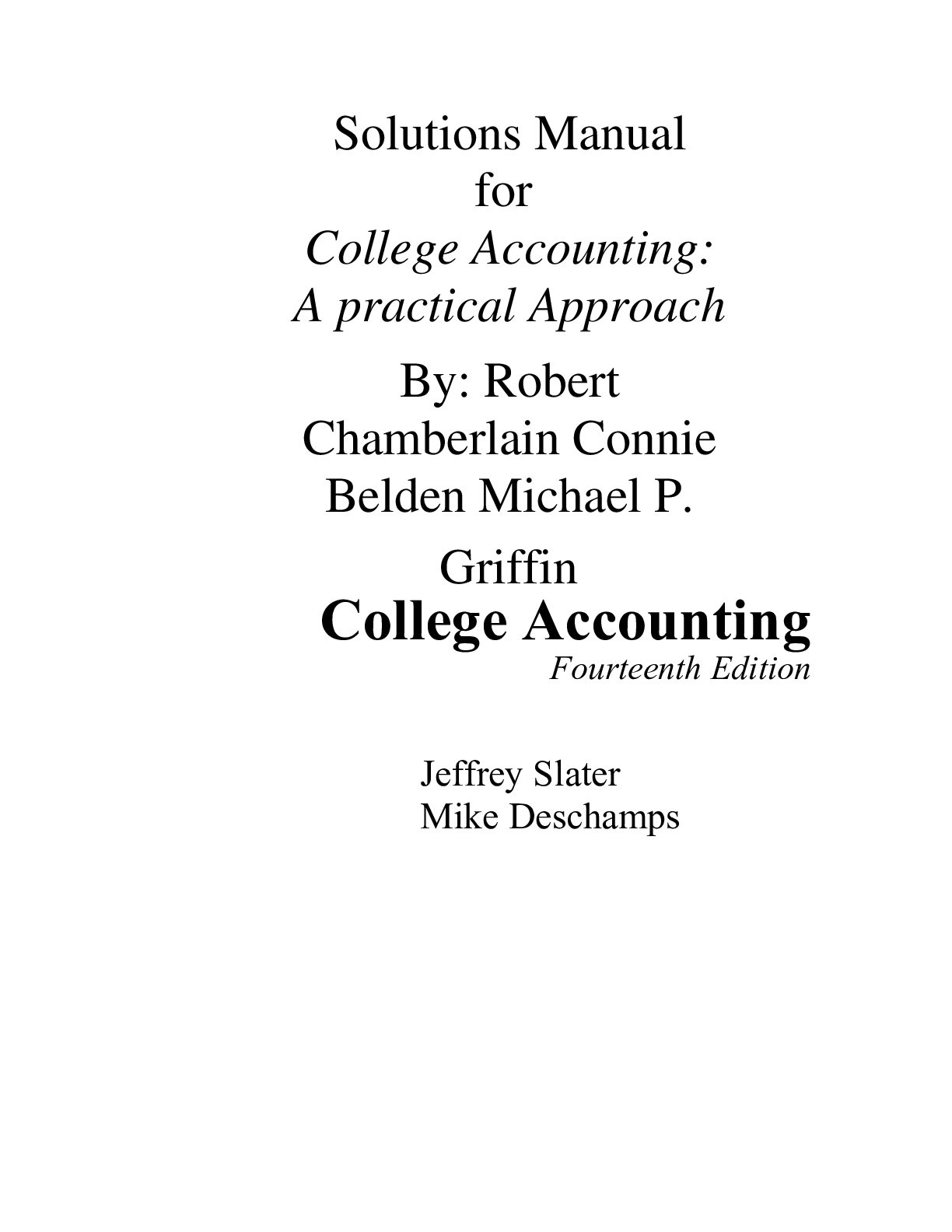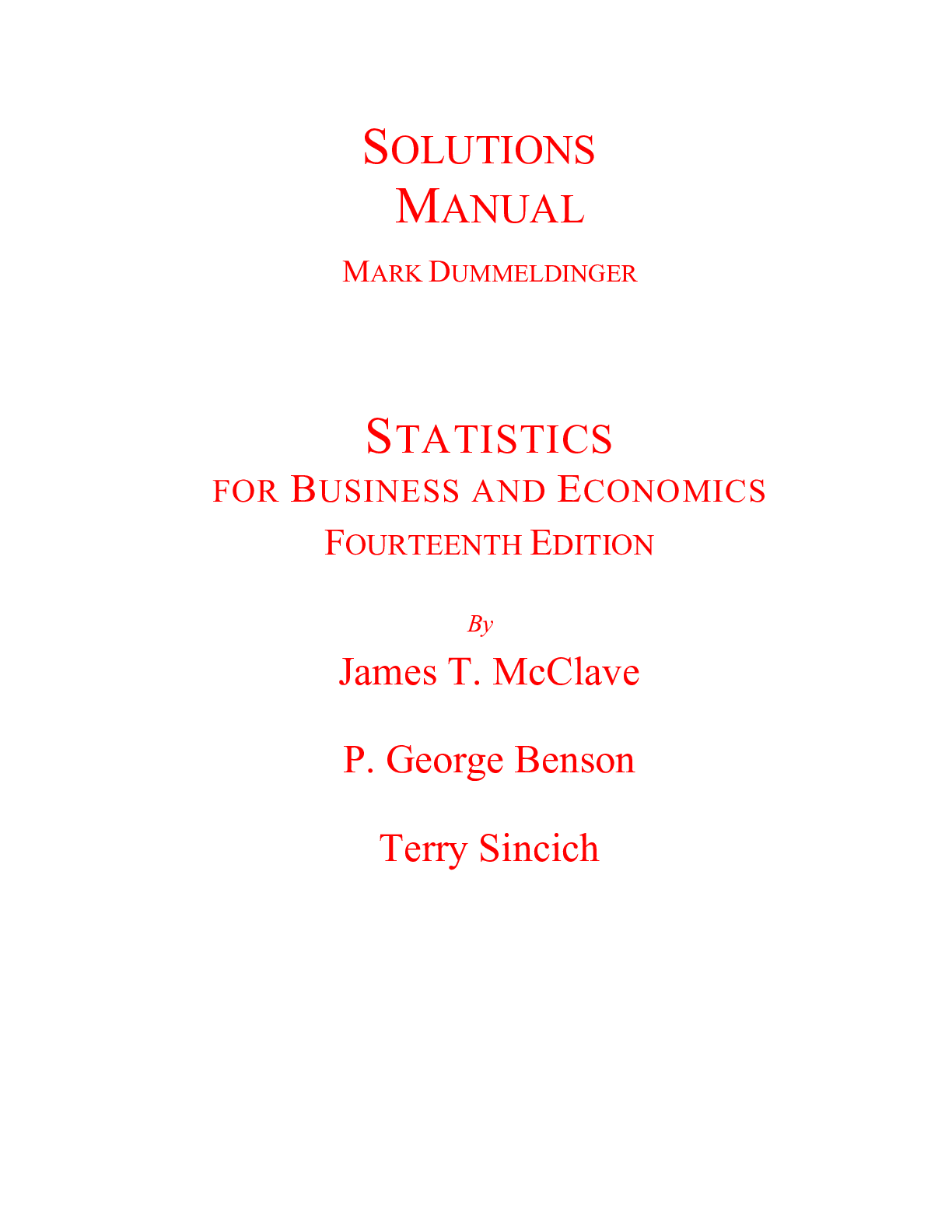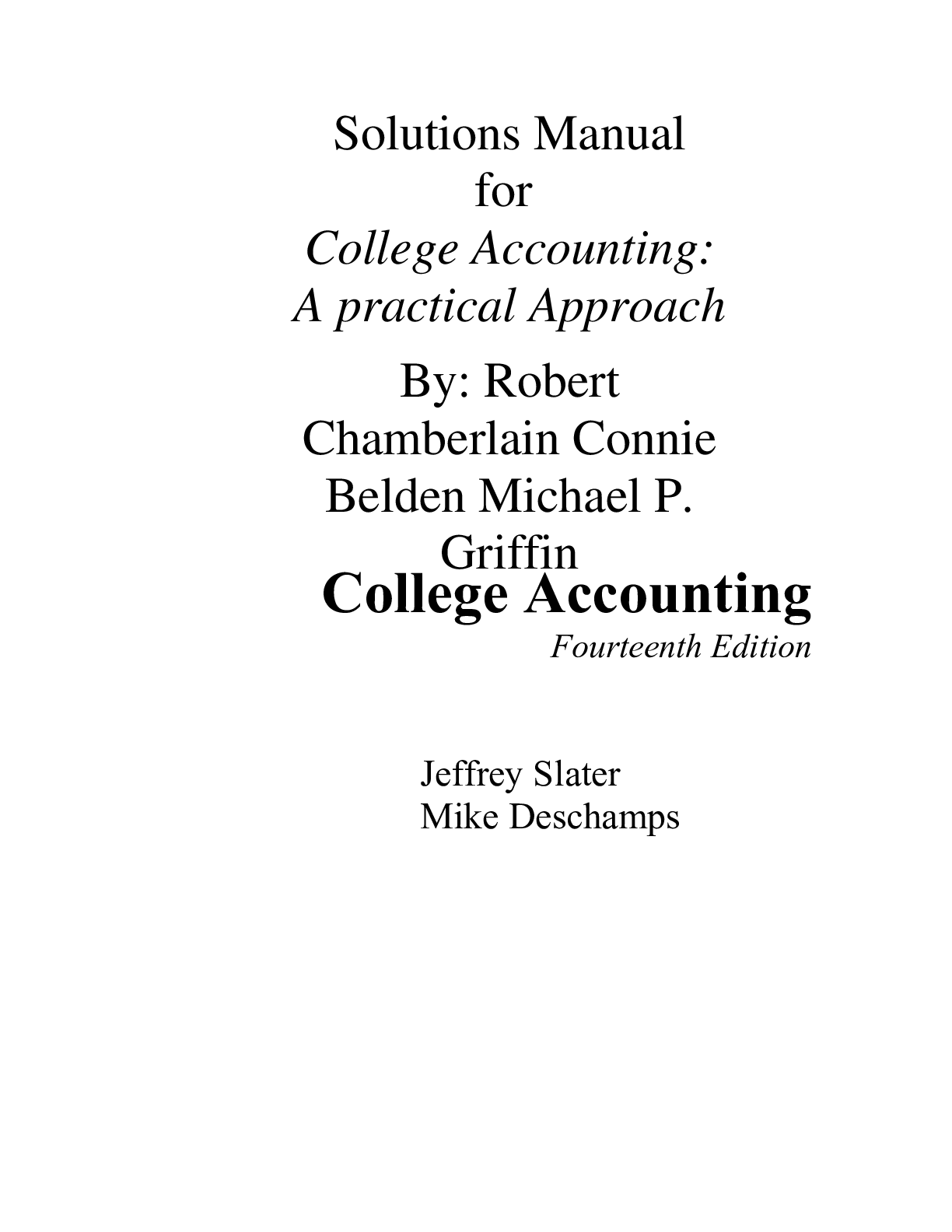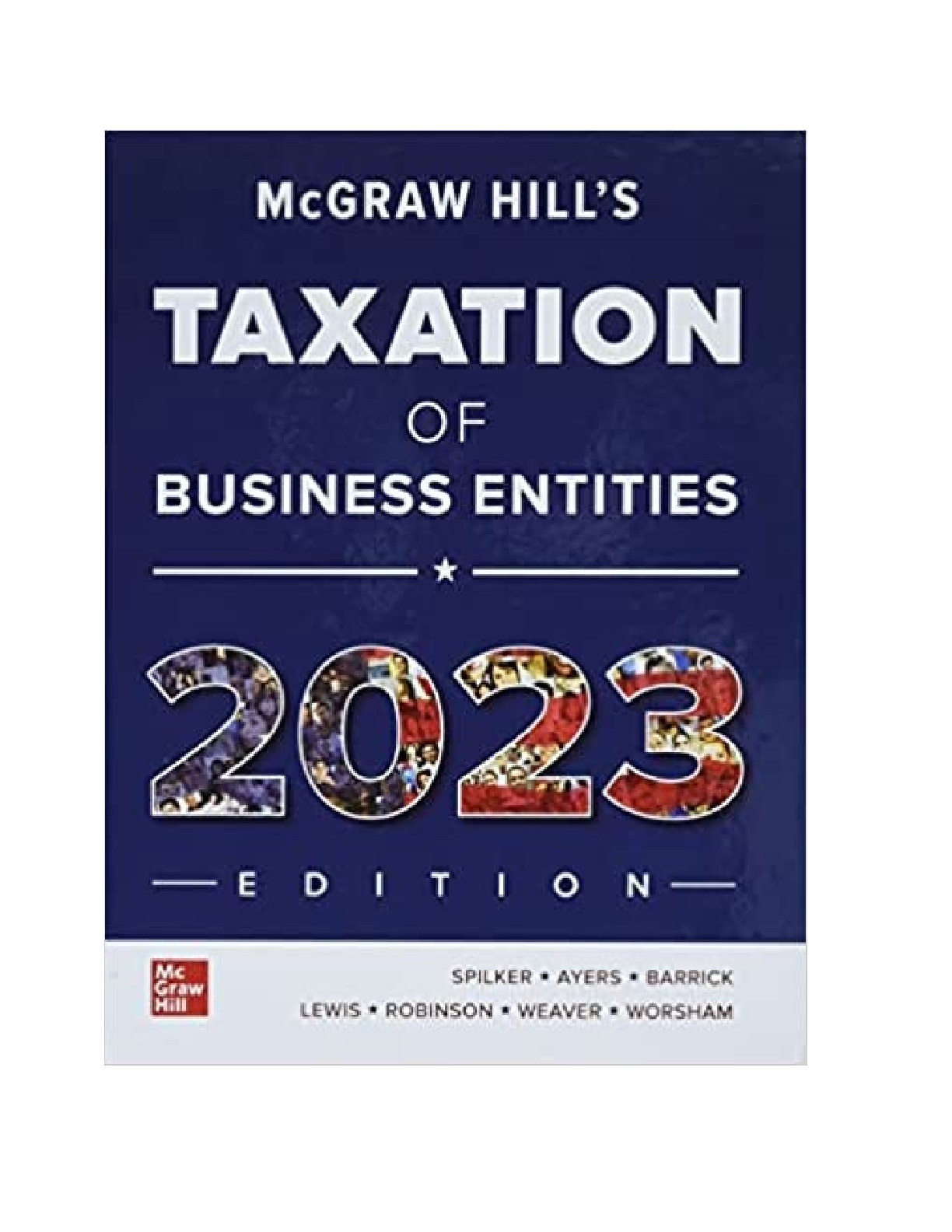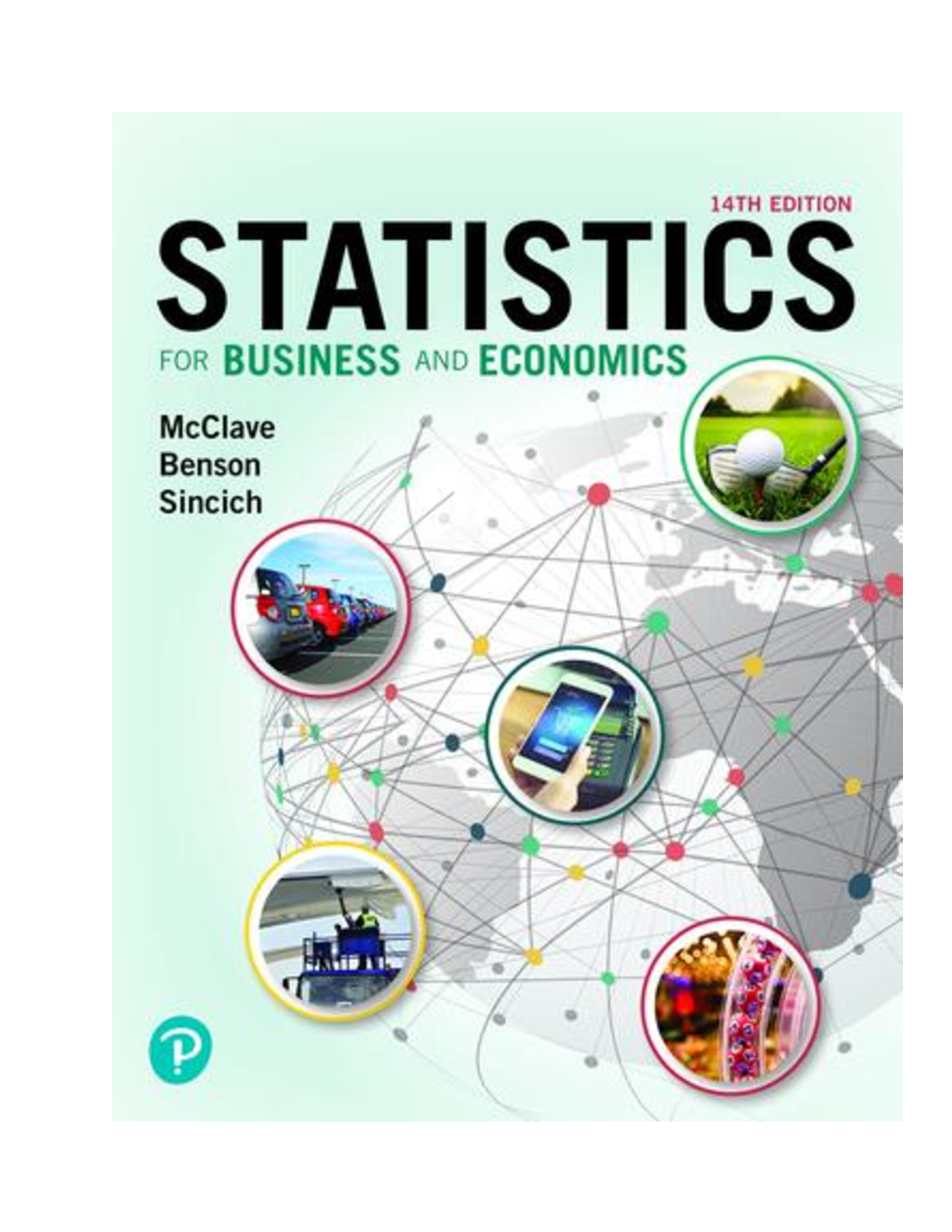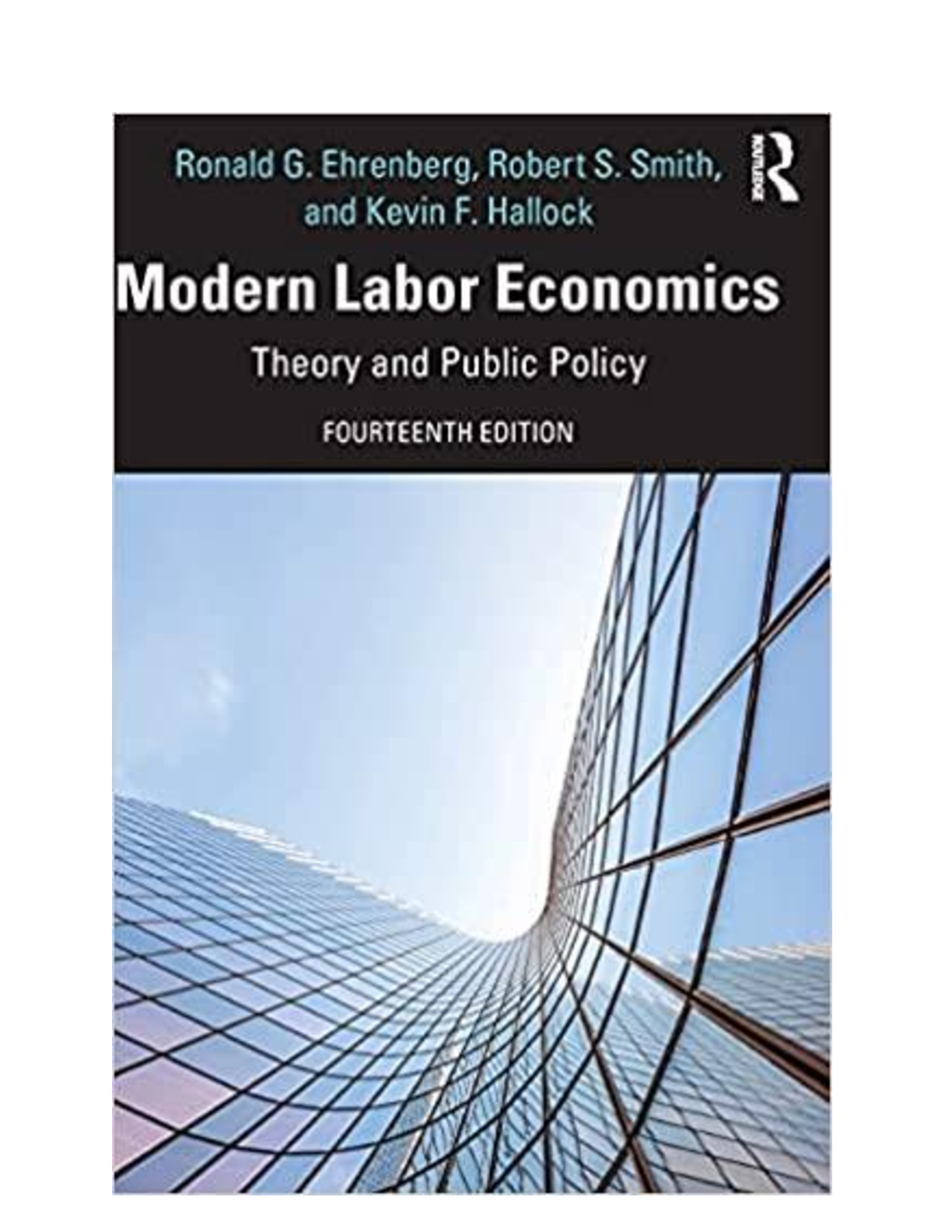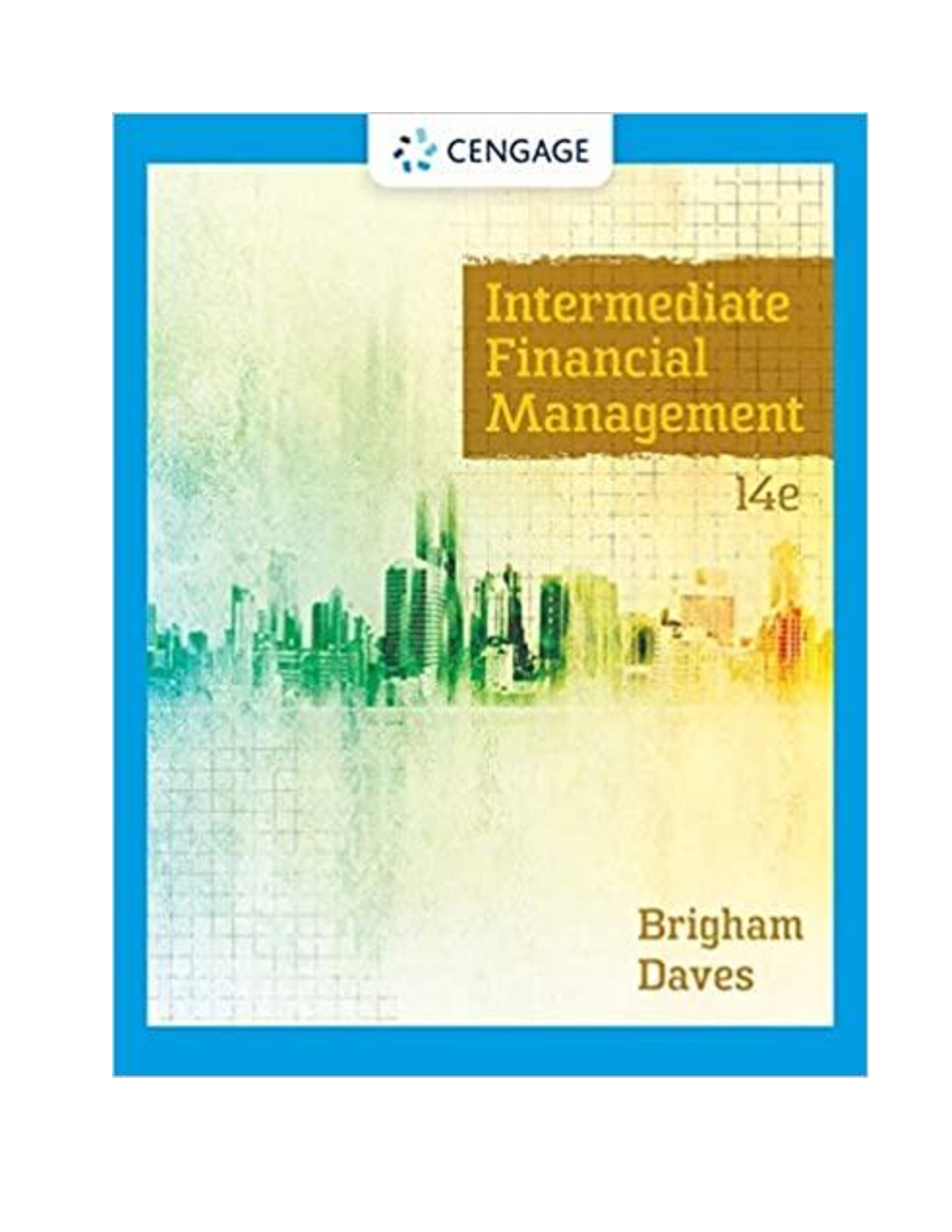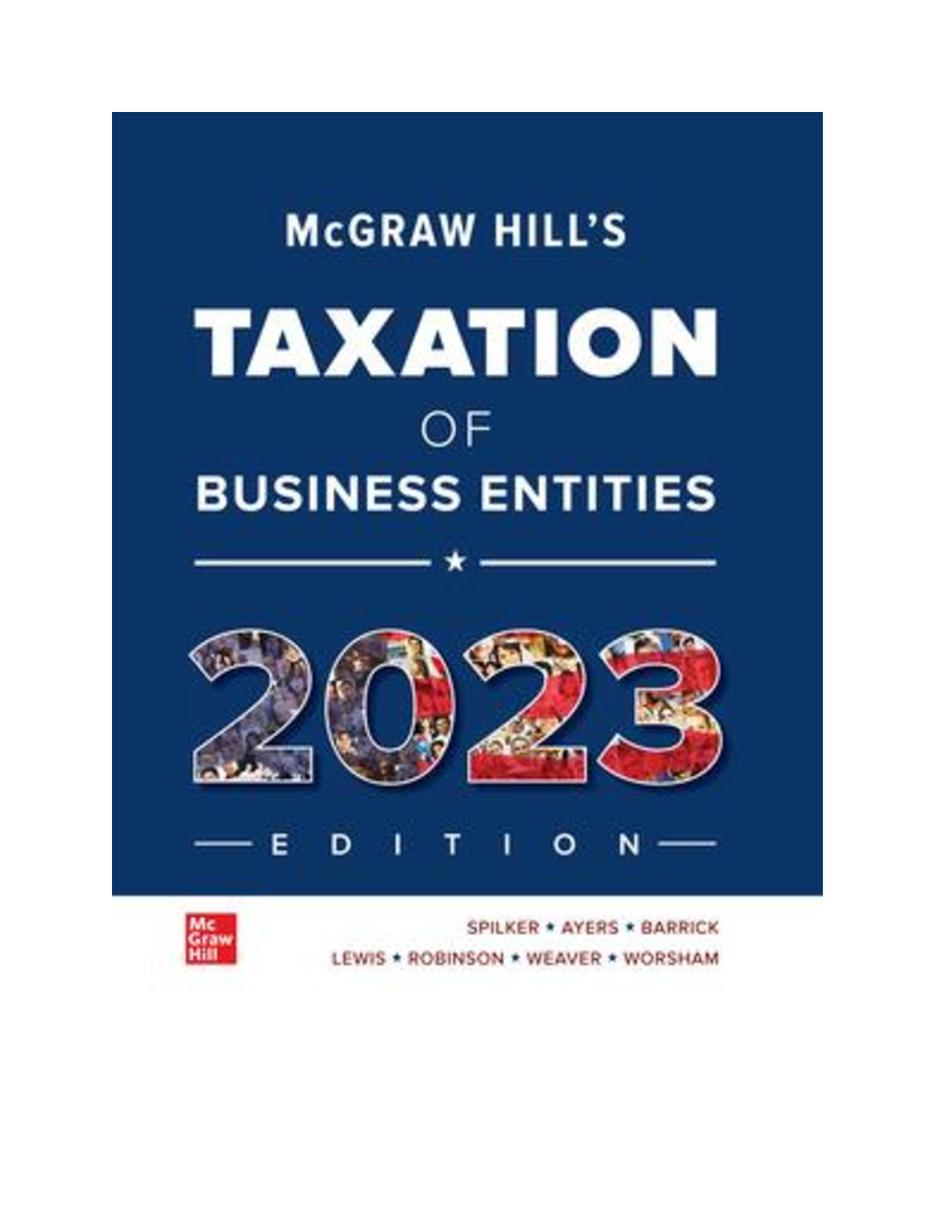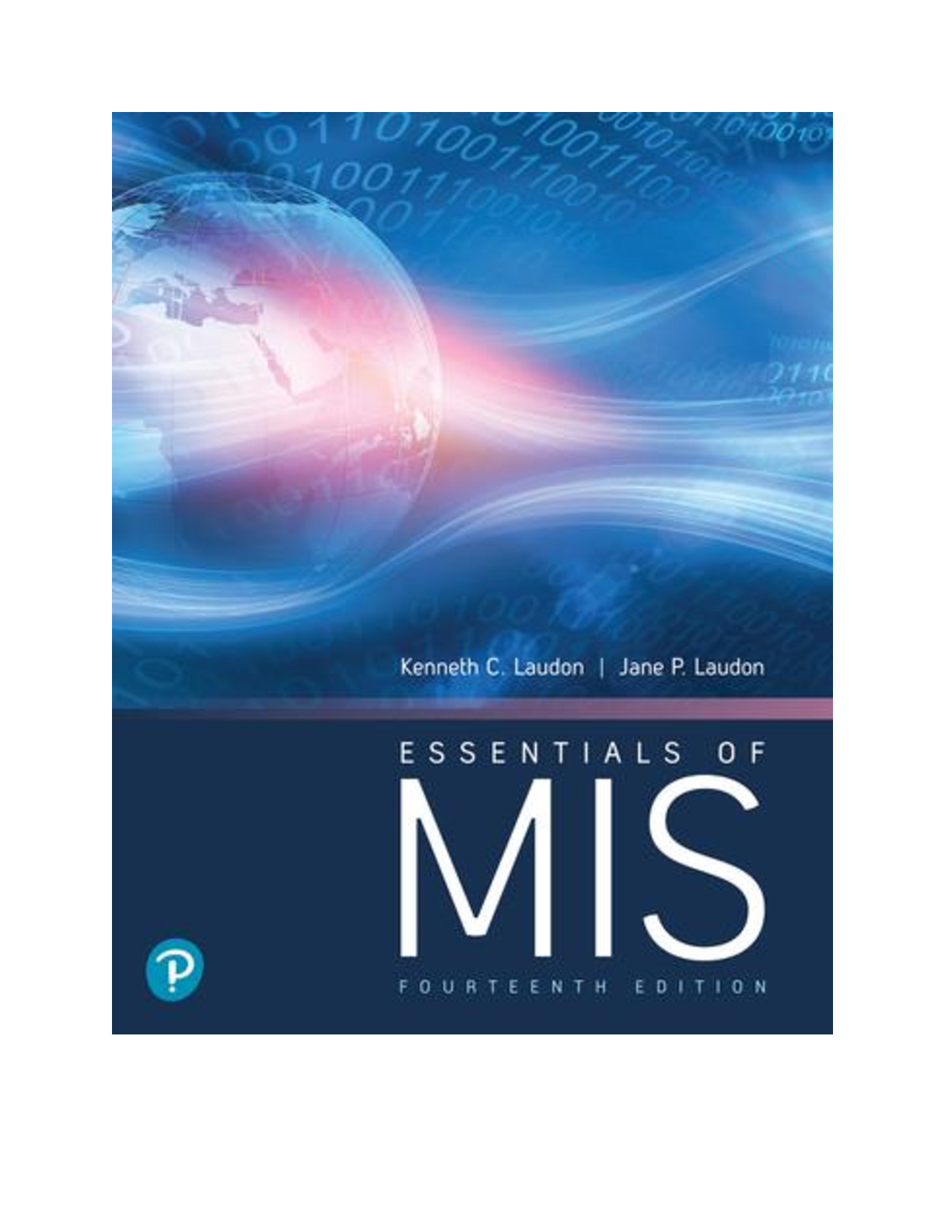Accounting > SOLUTIONS MANUAL > Solutions Manual V1 ta Intermediate Accounting, 14th edition 14th Edition by Donald E. Kieso (All)
Solutions Manual V1 ta Intermediate Accounting, 14th edition 14th Edition by Donald E. Kieso
Document Content and Description Below
Solutions Manual V1 ta Intermediate Accounting, 14th edition 14th Edition by Donald E. Kieso SOLUTIONS TO CONCEPTS FOR ANALYSIS CA 1-1 1. True 2. False. Any company claiming compliance with GAAP ... must comply with all standards and interpretations, including disclosure requirements. 3. True 4. False. In establishing financial accounting standards, the FASB relies on two basic premises: (1) the FASB should be responsive to the needs and viewpoints of the entire economic community, not just the public accounting profession, and (2) it should operate in full view of the public through a “due process” system that gives interested people ample opportunities to make their view known. CA 1-2 1. False. In addition to providing decision-useful information about future cash flows, management also is accountable to investors for the custody and safekeeping of the company’s economic resources and for their efficient and profitable use; however, this is not considered an objective. 2. False. The objective of financial reporting is to provide financial information about the reporting entity that is useful to present and potential equity investors, lenders, and other creditors in making decisions in their capacity as capital providers. 3. False. The FASB follows the same due process procedures for interpretations and standards. 4. True CA 1-3 1. (d) 2. (d) 3. (d) 4. (a) 5. (a) 6. (b) 7. (d) 8. (b) CA 1-4 (a) Financial accounting is the process that culminates in the preparation of financial reports relative to the enterprise as a whole for use by parties both internal and external to the enterprise. In contrast, managerial accounting is the process of identification, measurement, accumulation, analysis, preparation, interpretation, and communication of financial information used by the management to plan, evaluate, and control within an organization and to assure appropriate use of, and accountability for, its resources. (b) The financial statements most frequently provided are the balance sheet, the income statement, the statement of cash flows, and the statement of changes in owners’ or stockholders’ equity. 1-12 Copyright © 2011 John Wiley & Sons, Inc. Kieso, Intermediate Accounting, 14/e, Solutions Manual (For Instructor Use Only) CA 1-4 (Continued) (c) Financial statements are the principal means through which financial information is communicated to those outside an enterprise. As indicated in (b), there are four major financial statements. However, some financial information is better provided, or can be provided only, by means of financial reporting other than formal financial statements. Financial reporting (other than financial statements and related notes) may take various forms. Examples include the company president’s letter or supplementary schedules in the corporate annual reports, prospectuses, reports filed with government agencies, news releases, management’s forecasts, and descriptions of an enterprise’s social or environmental impact. CA 1-5 (a) In accordance with Statement of Financial Accounting Concepts No. 1, “Objectives of Financial Reporting by Business Enterprises,” the objectives of financial reporting are to provide information to investors, creditors, and others 1. that is useful to present and potential investors and creditors and other users in making rational investment, credit, and similar decisions. The information should be comprehensible to those who have a reasonable understanding of business and economic activities and are willing to study the information with reasonable diligence. 2. to help present and potential investors and creditors and other users in assessing the amounts, timing, and uncertainty of prospective cash receipts from dividends or interest and the proceeds from the sale, redemption, or maturity of securities or loans. Since investors’ and creditors’ cash flows are related to enterprise cash flows, financial reporting should provide information to help investors, creditors, and others assess the amounts, timing, and uncertainty of prospective net cash inflows to the related enterprise. 3. about the economic resources of an enterprise, the claims to those resources (obligations of the enterprise to transfer resources to other entities and owners’ equity), and the effects of transactions, events, and circumstances that change its resources and claims to those resources. (b) Statement of Financial Accounting Concepts No. 1 established standards to meet the information needs of large groups of external users such as investors, creditors, and their representatives. Although the level of sophistication related to business and financial accounting matters varies both within and between these user groups, users are expected to possess a reasonable understanding of accounting concepts, financial statements, and business and economic activities and are expected to be willing to study and interpret the information with reasonable diligence. CA 1-6 Accounting numbers affect investing decisions. Investors, for example, use the financial statements of different companies to enhance their understanding of each company’s financial strength and operating results. Because these statements follow generally accepted accounting principles, investors can make meaningful comparisons of different financial statements to assist their investment decisions. Accounting numbers also influence creditors’ decisions. A commercial bank usually looks into a company’s financial statements and past credit history before deciding whether to grant a loan and in what amount. The financial statements provide a fair picture of the company’s financial strength (for example, short-term liquidity and long-term solvency) and operating performance for the current period and over a period of time. The information is essential for the bank to ensure that the loan is safe and sound. Copyright © 2011 John Wiley & Sons, Inc. Kieso, Intermediate Accounting, 14/e, Solutions Manual (For Instructor Use Only) 1-13 CA 1-7 It is not appropriate to abandon mandatory accounting rules and allow each company to voluntarily disclose the type of information it considered important. Without a coherent body of accounting theory and standards, each accountant or enterprise would have to develop its own theory structure and set of practices, and readers of financial statements would have to familiarize themselves with every company’s peculiar accounting and reporting practices. As a result, it would be almost impossible to prepare statements that could be compared. In addition, voluntary disclosure may not be an efficient way of disseminating information. A company is likely to disclose less information if it has the discretion to do so. Thus, the company can reduce its cost of assembling and disseminating information. However, an investor wishing additional information has to pay to receive additional information desired. Different investors may be interested in different types of information. Since the company may not be equipped to provide the requested information, it would have to spend additional resources to fulfill such needs; or the company may refuse to furnish such information if it’s too costly to do so. As a result, investors may not get the desired information or they may have to pay a significant amount of money for it. Furthermore, redundancy in gathering and distributing information occurs when different investors ask for the same information at different points in time. To the society as a whole, this would not be an efficient way of utilizing resources. CA 1-8 (a) One of the committees that the AICPA established prior to the establishment of the FASB was the Committee on Accounting Procedures (CAP). The CAP, during its existence from 1939 to 1959, issued 51 Accounting Research Bulletins (ARB). In 1959, the AICPA created the Accounting Principles Board (APB) to replace the CAP. Before being replaced by the FASB, the APB released 31 official pronouncements, called APB Opinions. (b) Although the ARBs issued by the CAP helped to narrow the range of alternative practices to some extent, the CAP’s problem-by-problem approach failed to provide the well-defined, structured body of accounting principles that was both needed and desired. As a result, the CAP was replaced by the APB. The APB had more authority and responsibility than did the CAP. Unfortunately, the APB was beleaguered throughout its 14-year existence. It came under fire early, charged with lack of productivity and failing to act promptly to correct alleged accounting abuses. The APB also met a lot of industry and CPA firm opposition and occasional governmental interference when tackling numerous thorny accounting issues. In fear of governmental rule making, the accounting profession investigated the ineffectiveness of the APB and replaced it with the FASB. Learning from prior experiences, the FASB has several significant differences from the APB. The FASB has: (1) smaller membership, (2) full-time, compensated membership, (3) greater autonomy, (4) increased independence, and (5) broader representation. In addition, the FASB has its own research staff and relies on the expertise of various task force groups formed for various projects. These features form the bases for the expectations of success and support from the public. In addition, the due process taken by the FASB in establishing financial accounting standards gives interested persons ample opportunity to make their views known. Thus, the FASB is responsive to the needs and viewpoints of the entire economic community, not just the public accounting profession [Show More]
Last updated: 1 month ago
Preview 1 out of 345 pages

Reviews( 0 )
Document information
Connected school, study & course
About the document
Uploaded On
Mar 27, 2024
Number of pages
345
Written in
Additional information
This document has been written for:
Uploaded
Mar 27, 2024
Downloads
0
Views
19



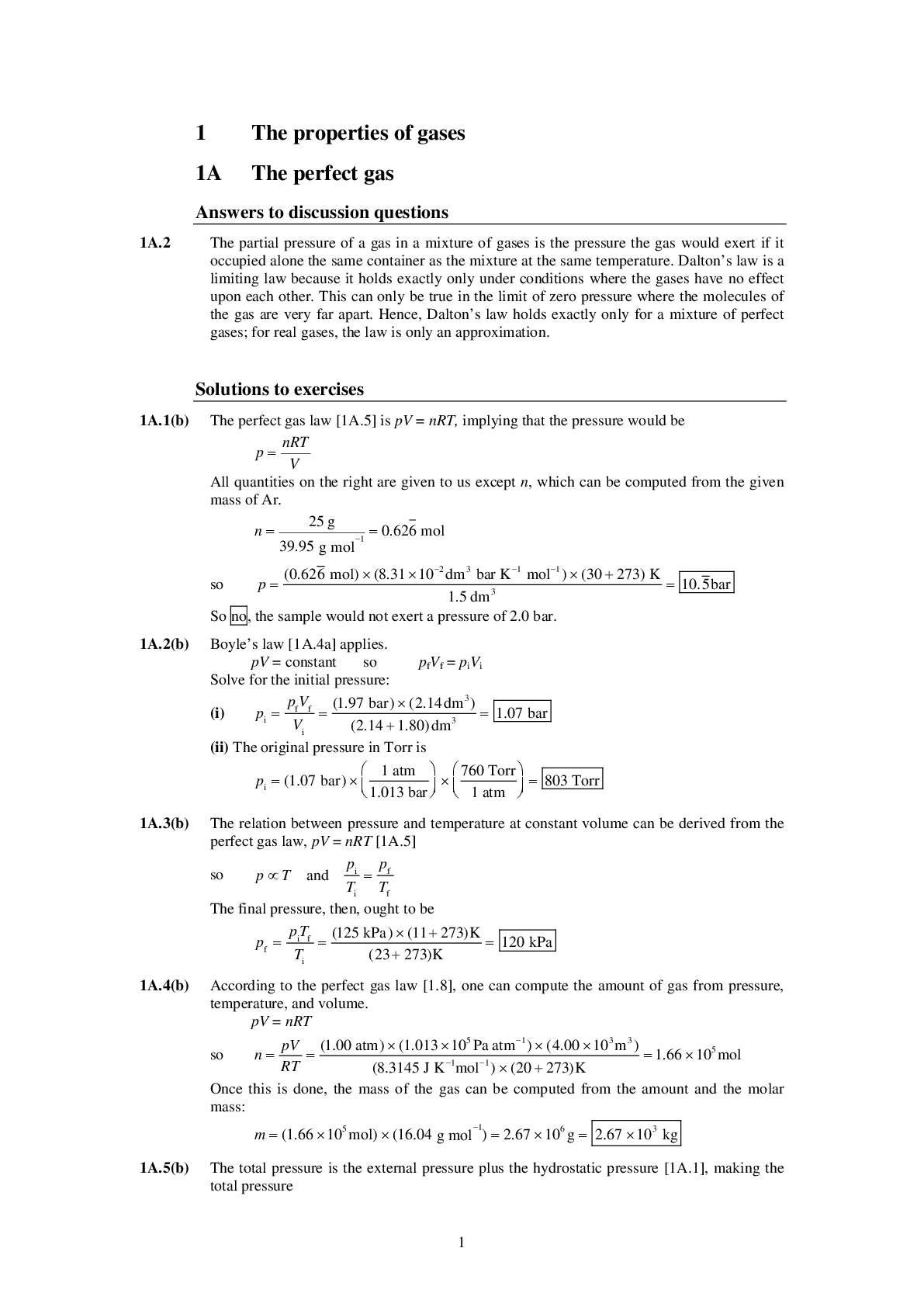
 for Linear Algebra and Its Applications (Thomas Polaski, Judith McDonald -David C.png)
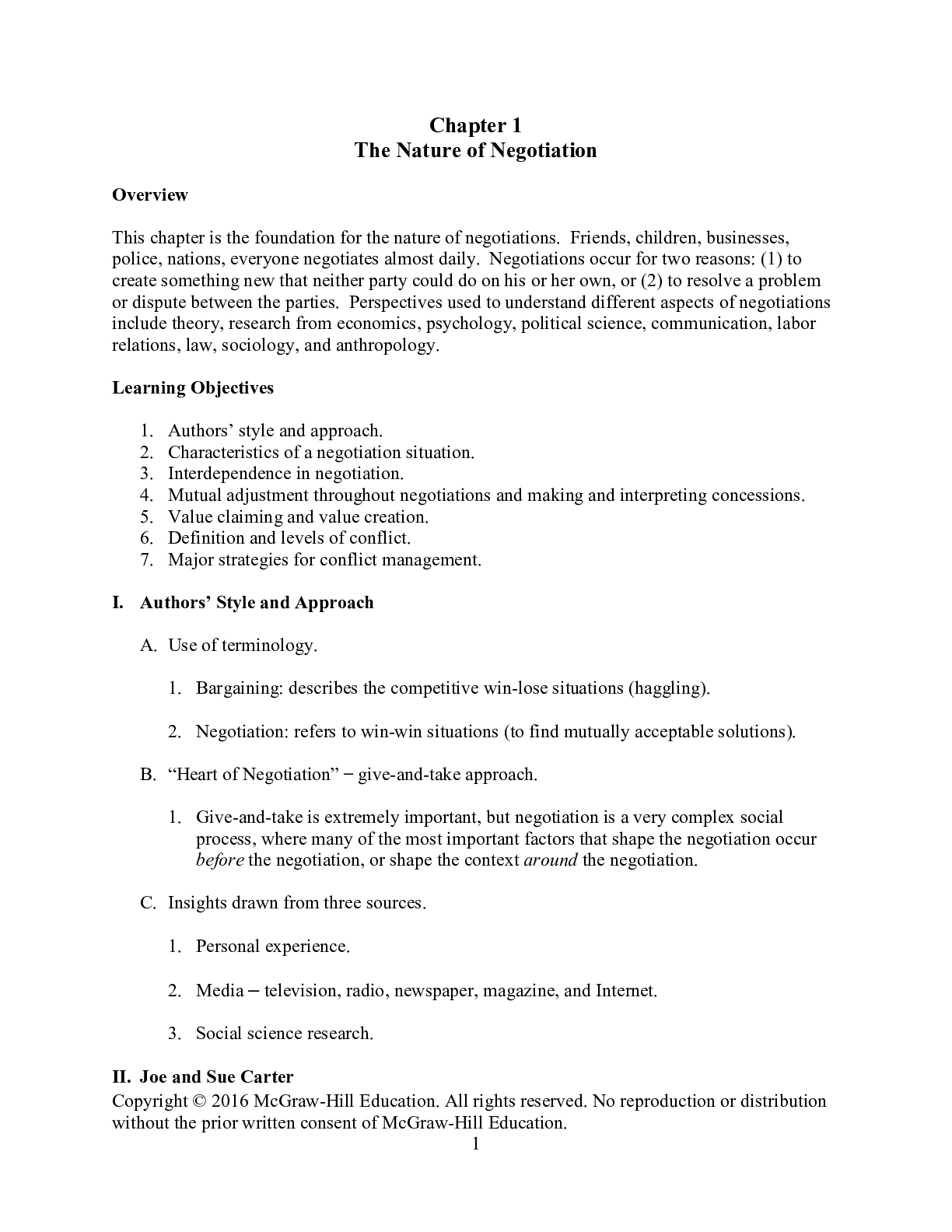
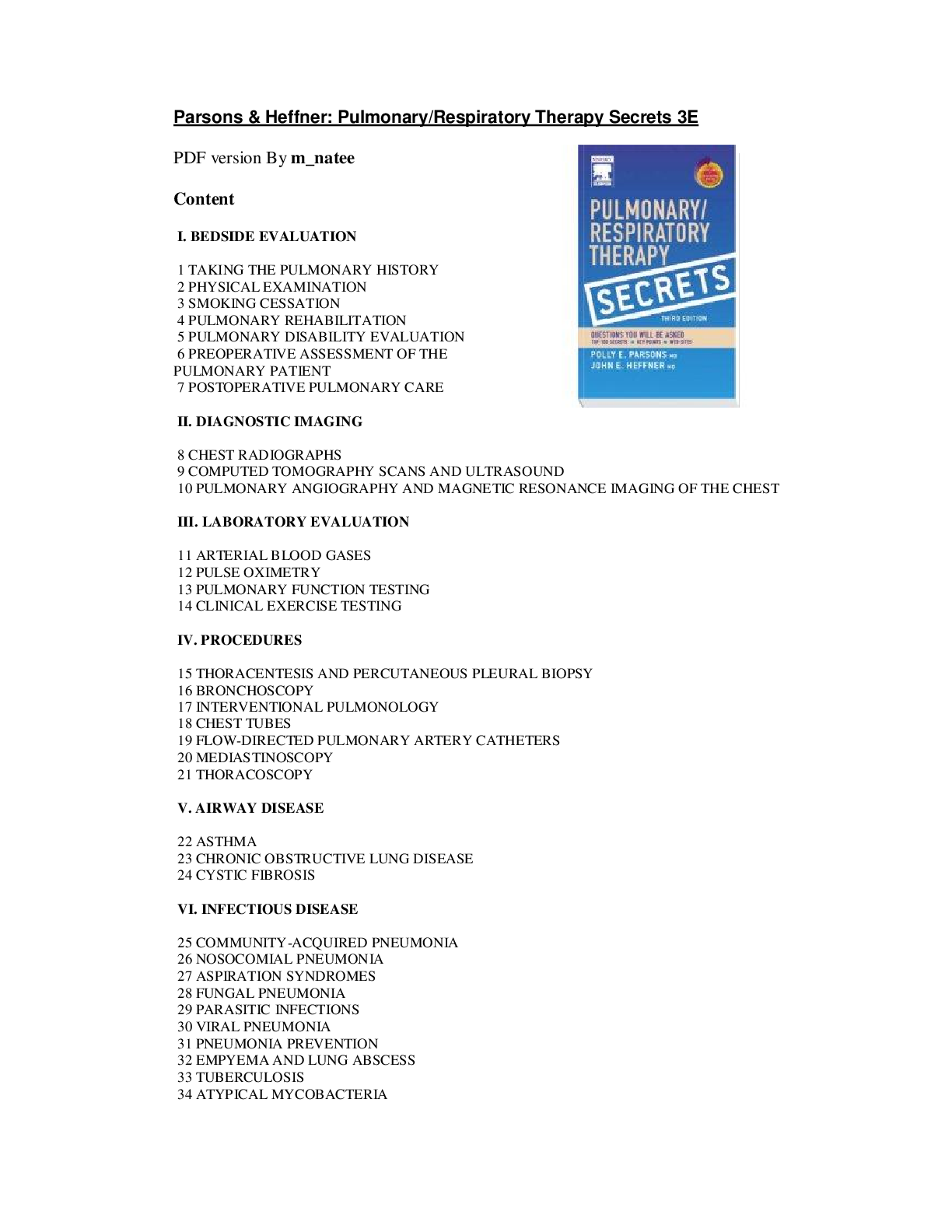


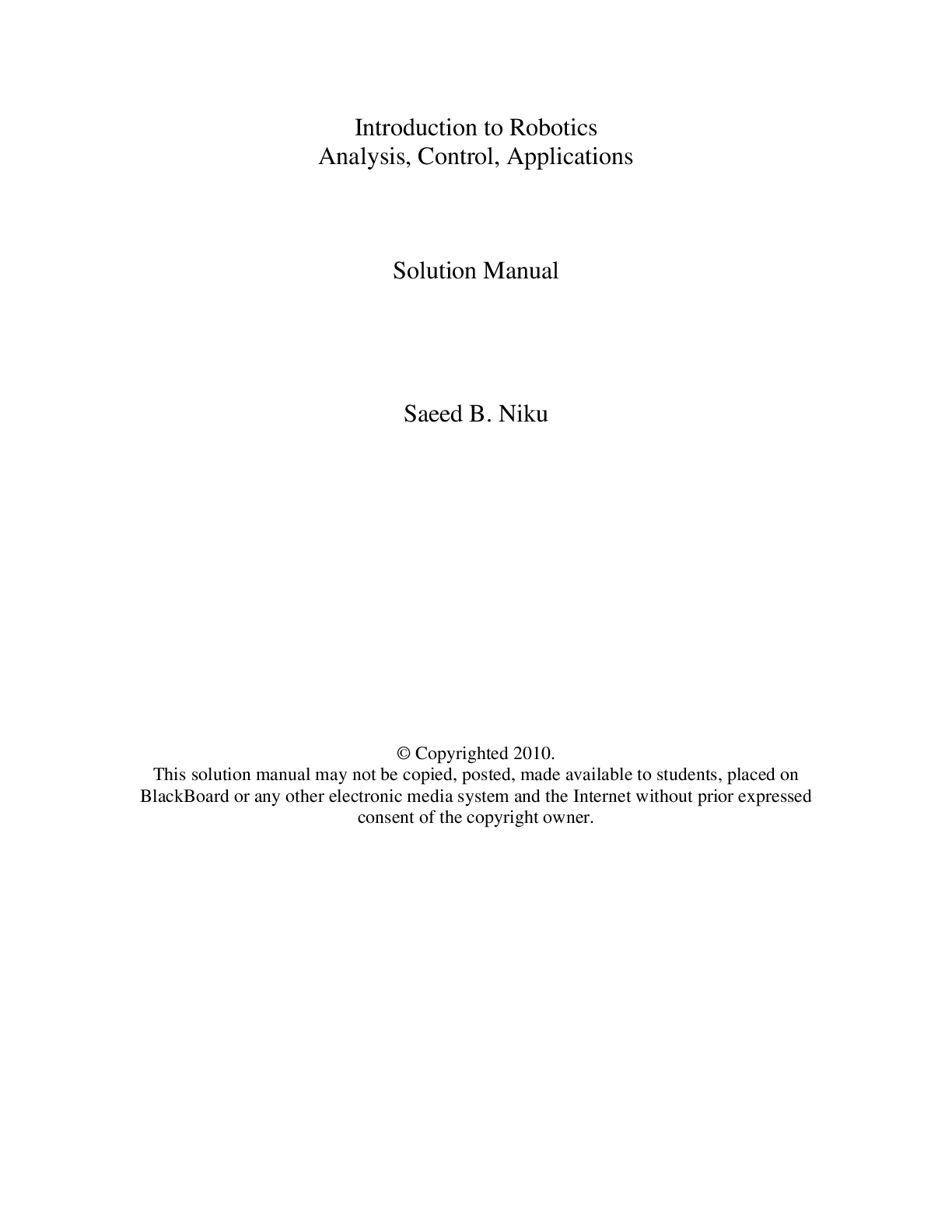




 by David M.png)


